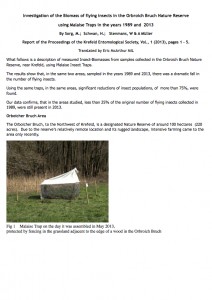Here’s a link to a study released just last week conducted by Christina Mogren and Jonathan Lundgren: Neonicotinoid-contaminated pollinator strips adjacent to cropland reduce honey bee nutritional status. For any of you trying to understand the issues surrounding the neonicotinoid family, it is important reading.
It’s not difficult to see why the USDA has become increasingly uncomfortable with what Lundgren and Mogren have found. The study addresses questions that should have been asked and answered by the USDA and EPA 20 years ago; before clothianidin was given a conditional registration to cover Bayer’s loss of market share because of the expiration of their patent on imidacloprid, and before hundreds of millions of acres were poisoned by these water-soluble chemicals with half-lives of years, unleashed on the environment virtually without restraint. Findings like these confirm previous studies done by others, like this one from the UK showing that 97% of the neonic contamination of bees came from wildflowers not the target crops, or this recent USGS paper that showed contamination of native bees with neonics when there was no agriculture within their flight range, (and that was right here in Northeastern Colorado).
The conclusions emerging are that the environmental damage may be more mobile and pernicious than anyone in the USDA or EPA is willing to admit to, and that widespread plantings along highway rights-of-way and elsewhere may be killing fields rather than habitat unless we have a baseline understanding of what the contamination is – or isn’t. None of the EPA or USDA people who were involved in the decisions that brought us to this environmental disaster wants to go anywhere near that Pandora’s Box and it’s up to people like Mogren, like Lundgren, like you and me, to open it up.








